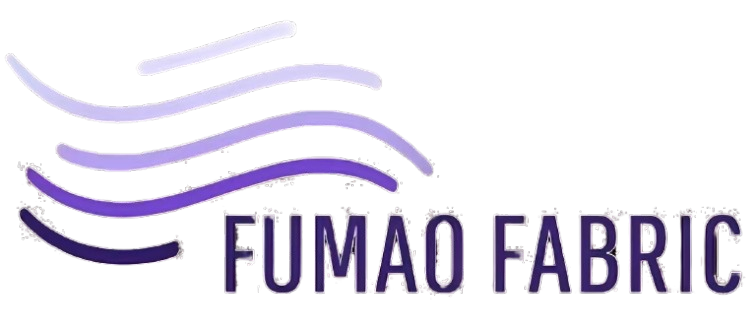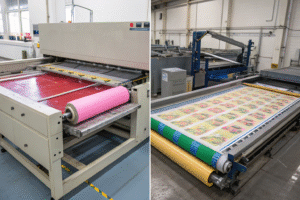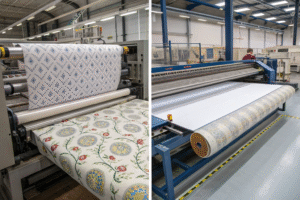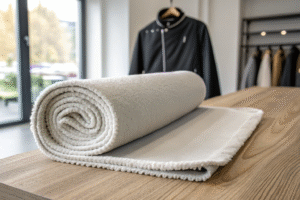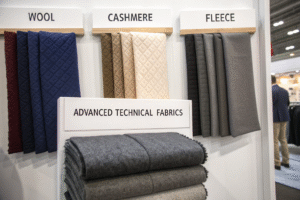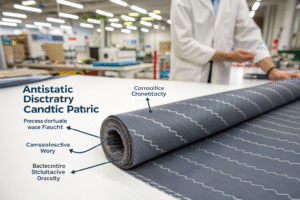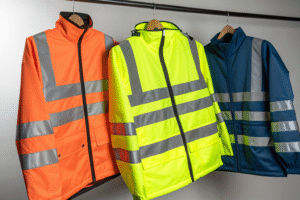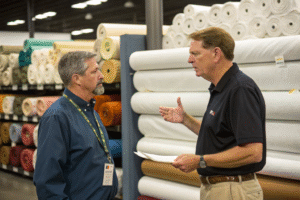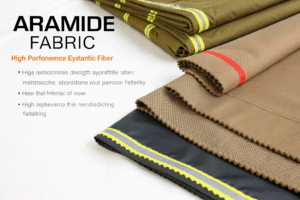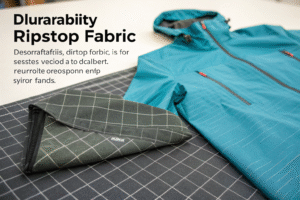Trusting a supplier’s quality control process without verification can cost you. I’ve seen importers lose thousands due to color inconsistency, incorrect GSM, or failed lab tests—simply because they didn’t audit their fabric mill’s QC system before bulk production.
Auditing a Chinese fabric supplier’s QC process involves reviewing their lab setup, verifying their inspection procedures, requesting test reports, and confirming how they handle defects, documentation, and traceability from greige to final roll.
In this guide, I’ll walk you through how to evaluate whether your supplier’s quality control is real or just a sales pitch—and how we help global clients validate every fabric before it ships.
What Key QC Facilities Should a Fabric Supplier Have?
The first sign of a reliable supplier is their testing setup. A good fabric mill in China should have a physical QC lab with certified equipment and trained technicians—ideally with CNAS, ITS, or SGS alignment.
Your supplier should have lab equipment for shrinkage, GSM, pilling, tensile strength, colorfastness, and chemical finish validation, along with documented testing protocols.

What Basic Equipment Should Be Present?
- GSM cutter & scale
- Color assessment cabinet (D65/UV light)
- Washfastness tester
- Shrinkage oven & dimensional table
- Tensile strength tester
- Pilling & abrasion machines
At Fumao, we use CNAS-accredited machines and follow ITS standards. Every batch is tested at greige, post-dyeing, and pre-shipment stages.
| Test Type | Equipment Used | Common Issues Caught |
|---|---|---|
| GSM | GSM Cutter + Scale | Weight inconsistency |
| Colorfastness | ISO/AATCC Test Machines | Dye bleeding/fading |
| Shrinkage | Pre-wash/dry + Scale Ruler | Poor pre-treatment |
| Tensile Strength | Universal Testing Machine | Weak yarn construction |
How Do You Evaluate Their Inspection Workflow?
Beyond the lab, the real QC happens during inspection. You need to check whether the mill performs roll-to-roll inspection or just spot-checking—and how defects are handled in real time.
A trustworthy fabric mill will follow a documented 4-point or 10-point inspection system and show how they log, repair, or reject defective rolls before packing.

What Is a 4-Point Inspection System?
It’s an industry-standard method where inspectors assign penalty points to fabric defects by length and severity. Rolls with more than 40 points per 100 yards usually fail QC.
Can You Request Their Inspection Forms?
Absolutely. We recommend asking for:
- Sample roll inspection reports
- Final inspection summary sheets
- Defect photo documentation
These reports show how consistent and transparent the factory really is. At Fumao, we store all QC data digitally, linked to QR codes per roll.
| QC Step | What to Look For |
|---|---|
| Roll Inspection | Roll logs with date, inspector, findings |
| Defect Marking | Tags/stickers at defect points |
| Repair/Rejection Policy | Whether poor rolls are reprocessed |
| Final Approval | Who signs off, how it's documented |
What Documents and Reports Should You Receive?
If your supplier says “everything passed,” that’s not enough. You need proof—especially if you’re importing to the U.S. or Europe, where buyers expect accountability and performance data.
A professional Chinese mill will provide test reports, inspection logs, and certifications per batch—aligned with international standards like ISO, AATCC, or OEKO-TEX.

What Documents Should Be Standard?
- Shrinkage Report: Before and after wash, both directions
- Colorfastness Report: To washing, rubbing, light
- GSM Test Report: Sample size, scale, calibration date
- Final QC Checklist: Packaging, labeling, defect tolerance
- Safety Certifications: OEKO-TEX, REACH, etc. (if applicable)
At Fumao, we send a digital QC report pack 3–5 days before shipment, including roll-by-roll results and approval status for full transparency.
| Document Name | Purpose | Issued By |
|---|---|---|
| Shrinkage Test Sheet | Measures post-wash changes | In-house or SGS |
| GSM/Weight Record | Ensures consistent spec | In-house lab |
| Colorfastness Report | Dye stability confirmation | ITS / CNAS Lab |
| Final Roll Report | Lists defect status | QC Department |
How Can You Independently Verify QC Compliance?
Even with great reports, many smart buyers want extra assurance. That’s where third-party audits or remote inspections come in. These can validate what your supplier claims—or uncover hidden risks.
Independent QC verification includes third-party inspection services, remote video QC sessions, or QR-linked traceability reports that show real-time lab and roll data.
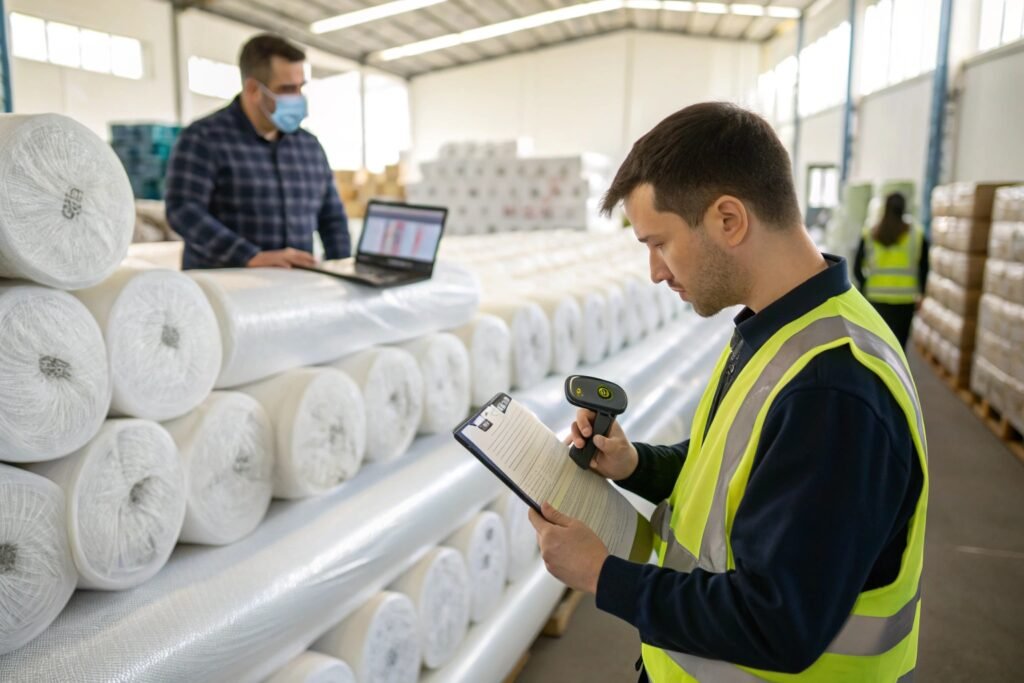
What Options Do Buyers Have?
- Hire QC Firms: Like SGS, ITS, or local agents in Keqiao.
- Schedule Remote Inspections: Supplier walks you through inspection via Zoom/WeChat.
- Use QR Traceability: We label each roll with a QR code linking to lab test data and inspection status.
At Fumao, 70% of our European clients opt for remote QC calls. We scan rolls, check defects, and open packaging while the buyer watches—saving travel time and boosting trust.
| Method | Benefit | Cost Level |
|---|---|---|
| Third-Party Audit | Highest objectivity | Medium–High |
| Remote Video Inspection | Fast + transparent | Low |
| QR Tracking Reports | Continuous monitoring | Included |
Conclusion
Auditing your Chinese fabric supplier’s QC process isn’t just good practice—it’s essential to protect your margins, your brand, and your buyer trust. Whether you're importing cotton poplin or coated canvas, quality issues can destroy deadlines and reputations. At Fumao, we believe in visible, traceable, and testable quality. Our QC system spans certified labs, real-time roll inspection, and digital reports you can verify from anywhere. If your current mill can’t show you how they check quality, maybe it’s time to check them.
